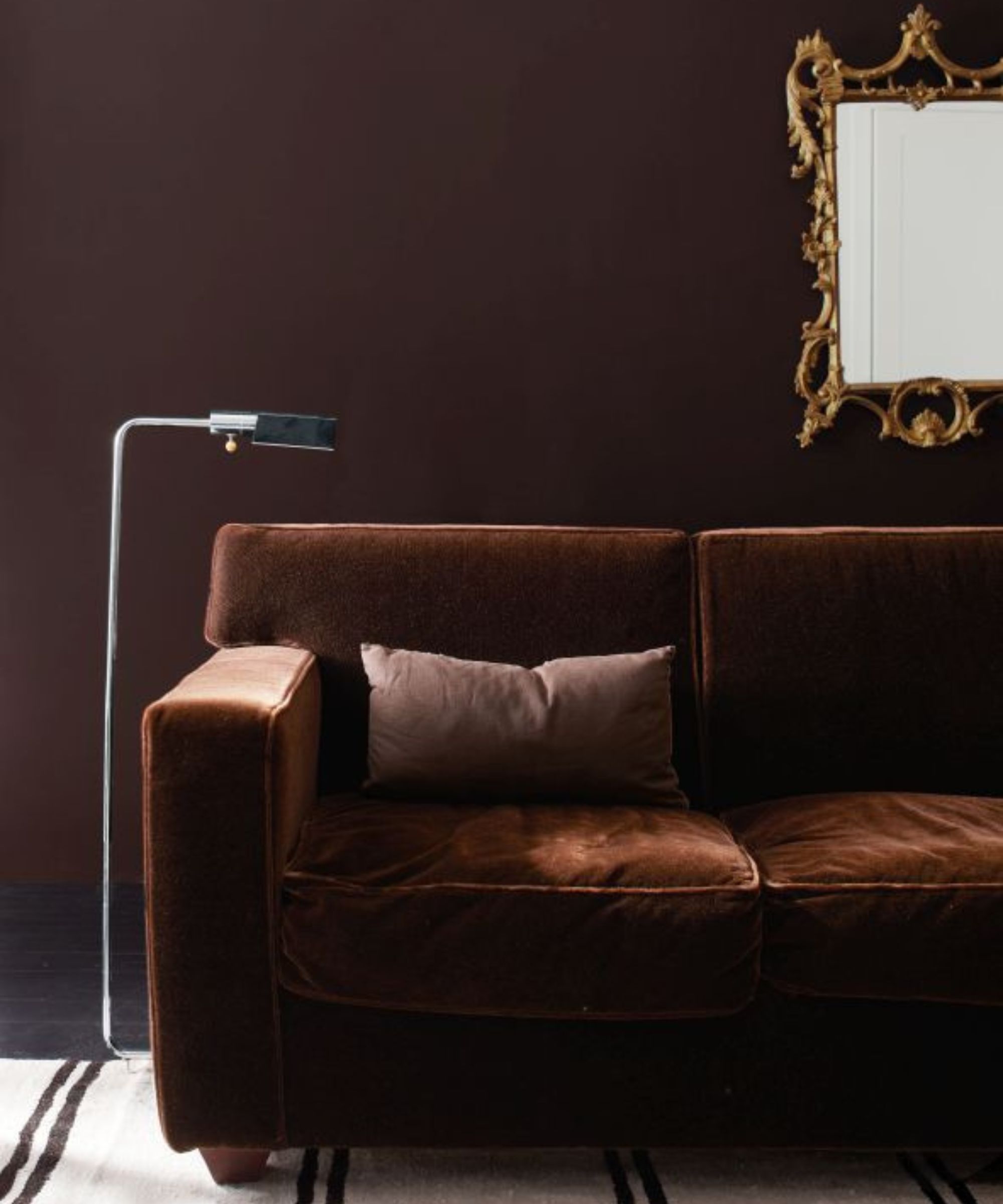How to wash couch cushions without damaging them – pro tips for every material
These are the expert-approved methods to diligently clean different types of couch cushion fabrics, ensuring their longevity


Cleaning your couch cushions is crucial to preserving their appearance and keeping them hygienic. However, navigating the delicate balance between cleaning and preserving the integrity of the cushion material can be a challenge.
Before cleaning a couch, it's essential to consider the specific cleaning requirements according to the couch cushion material type and the manufacturer's care instructions to use the method that will safeguard the cushion's fabric and structure.
Each material demands a tailored approach to ensure a thorough clean without damage. These are the step-by-step methods to remove stains and clean your upholstery with care.
How to wash different types of couch cushions without damaging them
It's important to note that the specific washing instructions may vary depending on the fabric and manufacturer's recommendations.
Some cushions may not be suitable for DIY cleaning and could be damaged in the process.
It's always a good idea to check with the fabric, furniture store, or manufacturer to ensure you're following the correct cleaning method for your specific couch cushions.
Vacuum pre-cleaning

Before washing couch cushions or tackling stains, vacuum the cushion covers to remove debris. Use the upholstery attachment to create a dirt and dust vacuum. Using a brush attachment will also work well and can be a more gentle approach.
This step effectively eliminates loose dirt and debris, making the subsequent cleaning steps easier and more effective.
Non-removable covers

For non-removable cushions or those made from delicate fabrics like silk or
wool, spot cleaning is the safer route.
The right detergent to use will depend on your fabric care instructions. Usually, upholstery cleaners or water-based solvent cleaners are good options. Alternatively, to make a couch cushion cleaner, combine one cup of warm water with one cup of vinegar, and one tablespoon of dish soap.
Always test the solution on an inconspicuous area of the cushion first to ensure it doesn't cause discoloration or damage.
To tackle stains, gently dab the solution onto the stained areas using a soft microfiber cloth or sponge, working inwards to avoid spreading it. For harsher stains, you may need to repeat this process a few times.
Next use a different, clean cloth or sponge to dab this area with water, effectively rinsing it.
After cleaning, blot the excess moisture with a dry cloth and allow the cushion to air dry completely, ensuring no moisture is trapped within.
If stains still won't lift, apply a baking soda paste directly onto the stained area. To create this paste, mix half a cup of baking soda with a small amount of water to create a thick paste.
Let this sit for 15-20 minutes, then use a soft brush to gently scrub the area in circular motions.
Rinse the area clean with a damp cloth to remove residue.
To wash the cushion, combine half a teaspoon of a mild detergent or dish soap with warm water. You can also add a couple of drops of your favorite essential oil to the mixture to add a scent, but only if you are sure it won't stain your couch cushions.
Use an upholstery brush to gently clean the cushion with this solution. Don't let the material become too wet when doing this.
Wipe the fabric with a fresh, damp cloth to rinse the mixture, and let it air dry.
JSCARLIFE Deep Scrub Cleaning Brush | Was $10.99, now $9.99 at Amazon
Removable covers

When washing removable couch cushion covers made of machine-washable fabric like cotton or polyester, remove the covers and launder them according to the label's directions.
However, before machine washing the couch cushion, pretreat it with an upholstery protector, such as this Scotchgard fabric water shield, from Amazon.
Alternatively, you can pretreat stains by using a mix of mild detergent and water, or, for oil-based stains, use a mixture of baking soda and water applied directly to stains.
After using a cloth or soft brush to gently work this mixture into the stained area, leave the solution to it for 15-30 minutes to break down the stains. Then, rinse this area.
Once the pretreatment is complete you can follow the cushion care instructions. Use a mild detergent on a gentle cycle with cold water to prevent shrinkage or color fading. Ensure all zippers are securely closed before washing.
Leather or faux leather

Cleaning leather couch cushions require specialized care to prevent damage. Follow the manufacturer's instructions.
'Wipe spills immediately with a clean, dry cloth to prevent stains,' advises Karina Toner, operations manager at Spekless Cleaning.
'Use a mild soap or leather cleaner specifically designed for leather upholstery.' We recommend this Leather Honey leather cleaner.
Apply the cleaner to a cloth and gently wipe the surface in circular motions. Avoid using excess moisture, as it can damage the leather.
Then, use a dry cloth to buff and remove any remaining cleaner.
'Apply a leather conditioner to maintain the material's suppleness and protect it from drying out,' continues, Karina Toner. You can find this Leather Honey leather conditioner, at Amazon.
Avoid using any harsh chemicals or abrasive tools that could damage the surface.
Microfiber or suede

To clean microfiber or suede cushions, Karina Toner advises: 'Vacuum using a soft brush attachment to eliminate dust and debris.
'For stains, use a mixture of water and mild detergent or upholstery cleaner designed specifically for this fabric applied with a soft cloth.
'Use a white cloth to blot the stain gently; avoid excessive scrubbing that could damage the material.
'Allow the fabric to air dry to maintain its texture and appearance.'
For general cleaning, you can use a spray bottle with rubbing alcohol to spritz the surface lightly. Do a patch test in an inconspicuous area before applying the cleaner to the entire cushion.
Allow the cushions to air-dry, and then you can brush the microfiber couch cushions with a soft-bristled brush to restore the texture.
Velvet or silk

'Follow specific cleaning instructions provided by the manufacturer for cleaning velvet or silk couch cushions,' says Karina Toner.
'Use a mild, gentle cleaner and a soft brush for stains, testing in an inconspicuous area first.
'Avoid water-based cleaners, as they may leave watermarks on these delicate materials.
'Seek professional cleaning services for challenging stains or delicate fabrics.'
Wipe the surface with a damp cloth and gently blot any treated areas to remove soap residue. Allow it to air dry naturally to avoid damaging the material.
Additional tips
Always avoid excessive water and heat, as this can damage the cushion materials.
If you are using laundry detergent to clean couch cushions, only use those that are dye-free to avoid any potential color bleeding or fading. We recommend these Tide PODS, from Amazon.
For most stains, dye-free laundry detergent can be effective, while commercial spot removers or homemade solutions may be necessary for tougher spills.
Deep or old spills might require professional cleaning or the use of a steam cleaner.
FAQs
What do laundry symbols mean?
The label depeicting laundry symbols in your couch cushions are the key to washing success. Ignoring this can lead to incorrect cleaning, shrinkage, color leaching, and general fabric damage.
Look for symbols like a washing machine with a temperature. This will tell you if your covers are machine-washable (and at what temperature). If there is a symbol of a washing machine or bucket of water with a hand, this indicates it is hand was only.
If the label has a symbol with a circle, this means it is dry clean only. In this case it's recommended to entrust them to a professional dry cleaner to prevent potential adverse effects on the material. A circle with a 'X' means it shouldn't be dry cleaned.
Additionally, cushion label says 'W', can be cleaned with a water-based cleaner, an 'S' indicates it you can use a solvent-based cleaner, and 'WS' suggests you can use either.
Remember, prevention is key to maintaining clean cushions.
Regular vacuuming with an upholstery brush attachment can help remove dirt and pet hair. Promptly addressing spills and stains can prevent them from setting in and becoming more difficult to clean.
Additionally, to revitalize your couch cushions, you can add a personalized scent to your upholstery to make sure it always smells nice. This can be a nice extra measure to take after cleaning your couch cushions to make them feel fresh.
Sign up to the Homes & Gardens newsletter
Design expertise in your inbox – from inspiring decorating ideas and beautiful celebrity homes to practical gardening advice and shopping round-ups.

Lola Houlton is a news writer for Homes & Gardens. She has been writing content for Future PLC for the past six years, in particular Homes & Gardens, Real Homes and GardeningEtc. She writes on a broad range of subjects, including practical household advice, recipe articles, and product reviews, working closely with experts in their fields to cover everything from heating to home organization through to house plants. Lola is a graduate, who completed her degree in Psychology at the University of Sussex. She has also spent some time working at the BBC.
-
 IKEA's new STOCKHOLM collection is HUGE – there are 96 chic pieces to shop and prices start from just $3.99
IKEA's new STOCKHOLM collection is HUGE – there are 96 chic pieces to shop and prices start from just $3.99STOCKHOLM is IKEA's largest collection yet, and features a beautiful collection of homeware pieces that nod to Swedish design
By Eleanor Richardson Published
-
 Michelle Monaghan's quiet luxury sofa color will be just as stylish in 100 years – the soft hue promotes calmness in her living room
Michelle Monaghan's quiet luxury sofa color will be just as stylish in 100 years – the soft hue promotes calmness in her living roomAn opulent sofa color, striped cushions, and vintage gold frames create a luxurious feel that invites tranquility into her living room – it's easy to recreate in any space
By Sophie Edwards Published
